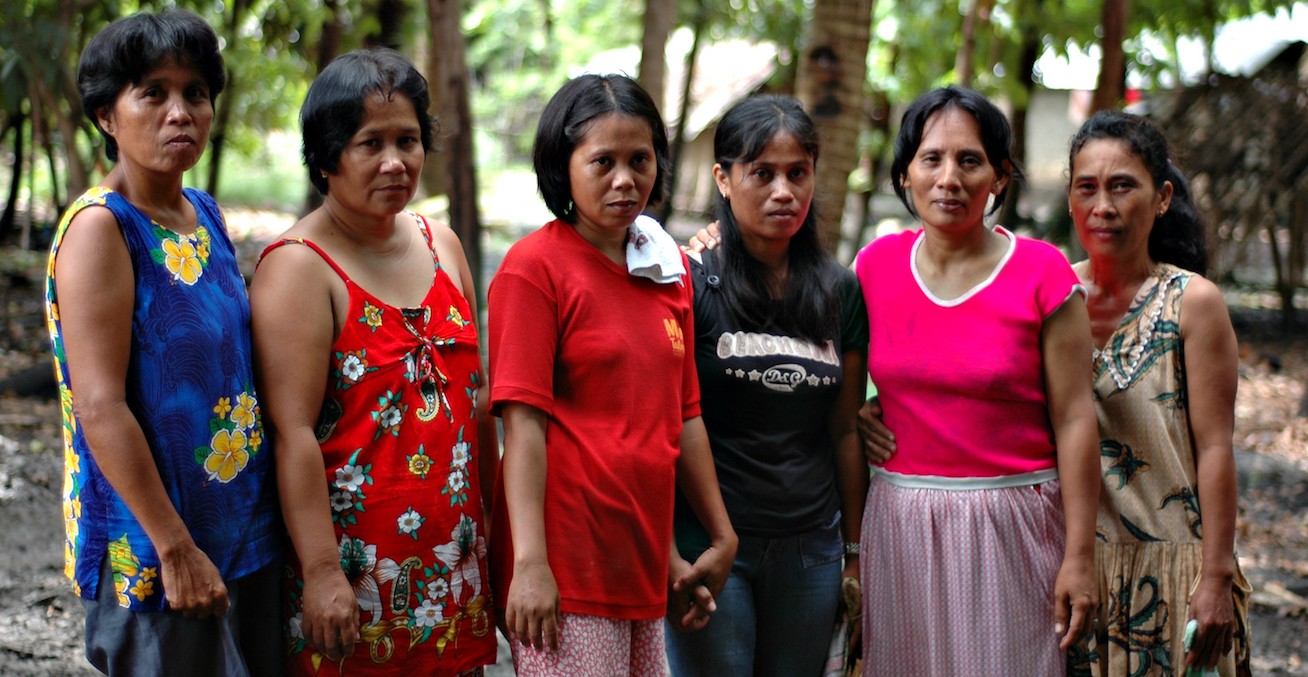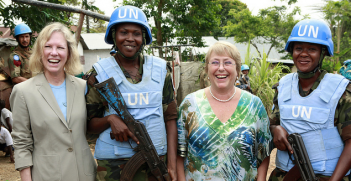Duterte, Hypermasculinity and the Key to Populism

Philippine President Rodrigo Duterte will not be coming to Sydney for the ASEAN Summit next week in the face of international pressure regarding his war on drugs. This epitomises Duterte’s strongman leadership style, but he’s far from the only populist leader exploiting gender for politics.
The last few years has seen the rise of populism but the case of Duterte’s leadership in the Philippines highlights the way in which gendered narratives and symbols are harnessed for politics.
Gender plays an important role in populist politics. Populism is often represented and analysed as if it is a genderless ideology and phenomenon; yet we see the role of gender starkly in the Philippines where President Rodrigo Duterte has an accumulating list of sexist and misogynist remarks that are often welcomed with cheers by his audience.
For instance, while addressing state forces recently Duterte gave a new order against female communist rebels: “We won’t kill you. We will just shoot your vagina.” This military command is supposedly more effective than others because without a vagina women are deemed useless. In the past, Duterte has also publicly promoted impunity for sexual violence under martial law; Duterte said every soldier can rape at most three women and still be protected from prosecution. While it is problematic that Duterte brazenly expresses violence against women and passes it off for humour, it is even more problematic that these pronouncements come from a leader who represents the state and that he has an audience.
To be clear, populist politics is not uncommon in the Philippines nor in comparable contexts of rule by strongman leaders in Southeast Asia and even in South America. Populism is an ideology and phenomenon characterised by a polarised antagonism between the masses or general public and the elite or dangerous other. Populism is also about passionate politics and the use of charismatic personality that differs between national contexts and is manifested in varied ways. It involves the harnessing of emotions as a constitutive element of governance, for instance in propagating an oppositional thinking of ‘us versus them’. From a gendered lens, populism is enabled by and underpins a gendered ideology around contextualised notions of masculinities and femininities.
Notions of masculinity are closely tied with power and leadership because positions of authority remain male-dominated. Governing by populism, as exemplified by Duterte, relies on the intensification of hypermasculine forms of leadership, which in turn contributes to normalising unequal gender relations. This is because populism involves the complicity of women, including the elite, who make the necessary bargains to secure power themselves. For example, pedigree or belongingness in political dynasties, especially in the case of the Philippines, has turned politics into a family affair with a political leader often represented as the head of the family.
In this case, paternalism within the family is extended into the public sphere. Consequently, the two female Philippine presidents, Corazon Aquino and Gloria Arroyo, had their leadership abetted not only by their political pedigree (as a widow and daughter of male political leaders respectively), but also by the performance of feminine, maternal and Catholic identities. This strategy, while politically expedient, does very little to transform prejudices against female leaders or broaden participation for non-elite women.
Hypermasculinity and populist leadership
Using Duterte as an example, it’s possible to identify three main elements to how hypermasculinity drives populism. First, hypermasculine populist leadership constitutes a posturing towards violence and aggression against the enemy or the ‘other’. This type of aggression is militarised or has recourse to harnessing the excessive use of force through state-armed forces including the police, in response to crisis. This hypermasculinity plays a role in Duterte’s war on drugs and in authorising martial law in response to threats of violent extremism in Marawi, Mindanao. In these examples, masculine aggression is translated into policy and frames problems in very narrow ways to legitimise a primarily military solution to otherwise very complex issues such as drug abuse and why groups turn to armed violence.
Second, hypermasculinity is embodied as sexual domination of women. This is male aggression writ large such that prowess in the private sphere of intimate relations is interpreted to extend to the public sphere of the state. Here again, Duterte exemplifies how his brand of populism is about proudly brandishing his sexual virility. Projecting a macho image is integral for legitimating domestic political authority, especially in the face of external security threats such as the ongoing South China Sea crisis. It is also used to consolidate support for addressing internal threats posed by communist rebels, rising violent extremism and political opposition.
Third, and crucially for Duterte’s hypermasculinity, leadership is about projecting benevolent paternalism. A key feature of past and present populist leadership, especially in the Philippines, is that male political leaders regard their authority as akin to being the father of the nation, who knows and pursues the best interest of the country. Supported by cultural norms around filial piety and reverence, this approach undermines democratic governance. Paternalism in populist politics, therefore, actively restricts deliberation around public interests and goals. Paternalism also helps explain the strong and sustained support Duterte receives from those who acknowledge that he may be sexist and misogynist, but at least he is benevolent.
Implications for governance and gender equality
What then are the gendered costs of populism and hypermasculine governance? Historically, in the Philippines and in the Southeast Asian region, populism in the form of strongman leaders has defined domestic politics and continues to do so. However, to understand the contemporary ways by which populism is borne by, and arises as a response to, escalating and multiple security crises at national and global levels, we need to take the role of gender seriously.
This is not the same as reducing leadership to gender or dismissing all other explanations for why populism arises and persists. Rather, it is to recognise that gender has a specific role in legitimising authority and in the performance of national or state identity. In particular, how and in what ways is hypermasculinity deliberately being performed or embodied in order to consolidate political authority and legitimise the excessive use of state power, as well as to reverse advances in gender equality more broadly?
We need to pay greater scrutiny to how crises and insecurities—whether real or constructed—enable leaders who have pre-existing strongman attributes to rise to power or how they enable existing leaders faced with crisis to more intensely revert to or rely upon hypermasculine rhetoric.
Finally, understanding the linkages between gender and populist leaders such as Duterte is crucial for piercing the veil on the full cost of populism and how it is affecting all dimensions of social, political and economic life.
Dr Maria Tanyag is a research fellow at the Monash University Gender, Peace and Security Centre.
This article is published under a Creative Commons Licence and may be republished with attribution.





